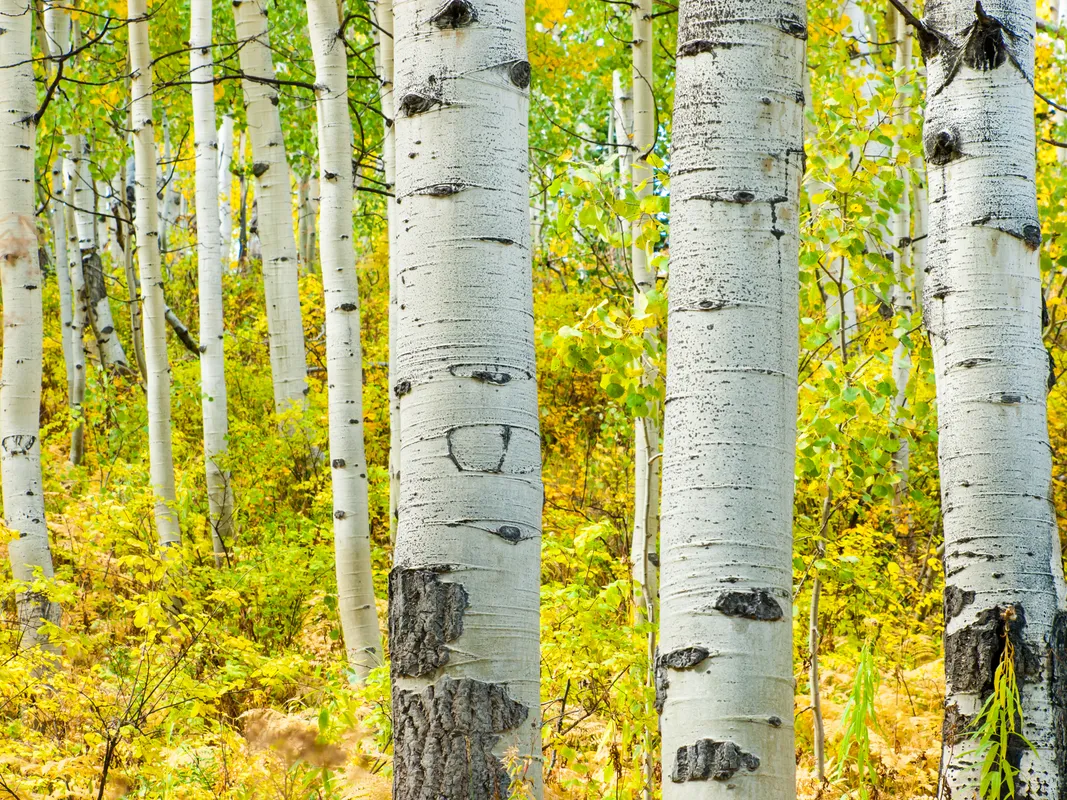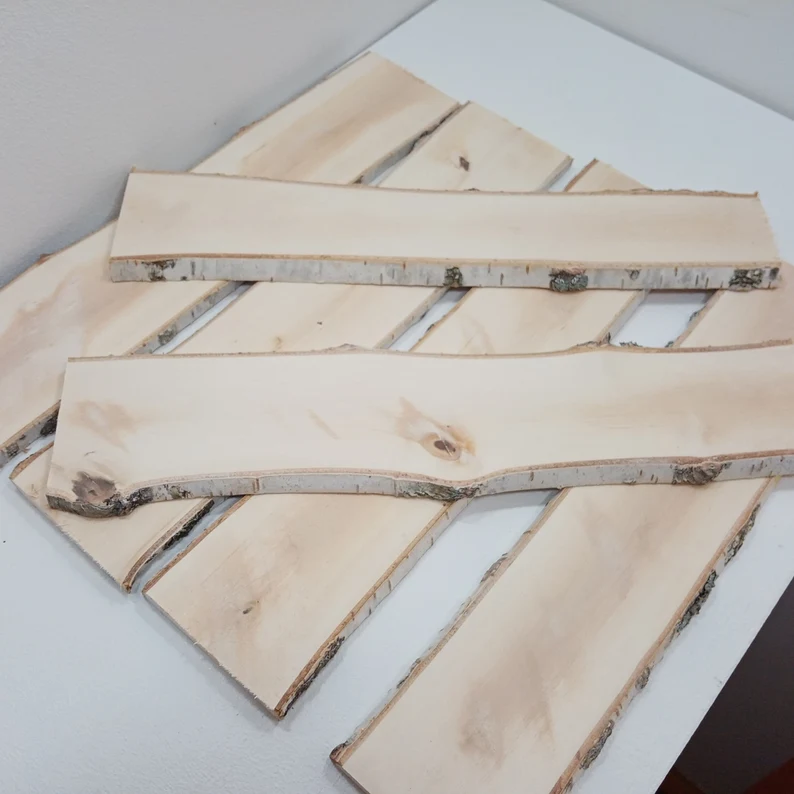WoodItGood is supported by its readers. We may earn an affiliate commission at no extra cost to you if you buy through a link on this page.
If you’ve ever wondered “What is birch wood?” you’re in the right place. Birch is a popular choice among woodworkers, and for good reason.
It’s versatile, easy to work with, and has a lovely appearance that can suit a variety of projects.
So, grab a cup of coffee, sit back, and let’s get to know birch wood a little better.
Origin and History of Birch Wood

Well, let me tell you a bit more about the fascinating origin and history of birch wood.
Birch trees are found mainly in the cooler regions of the Northern Hemisphere, especially in North America and parts of Europe. You’ll spot these beauties thriving in places like Canada, the northern United States, and Scandinavia.
They love those chilly climates!
Birch trees have been a part of human history for a long, long time. Native Americans were some of the first to really appreciate what birch had to offer.
They used the bark for all sorts of essential items like canoes, shelters, and even for making their writing paper.
The bark was prized for its waterproof qualities, making it perfect for crafting durable, lightweight canoes that could navigate rivers and lakes with ease.
In Europe, birch wood was also held in high regard. Folks used it for everything from furniture to firewood. Its straight grain and workability made it a favorite for making fine furniture and cabinetry.
In the good old days, birch wood was even used to make toys and utensils because of its smooth texture and durability.
So, you see, birch wood isn’t just another type of lumber. It’s got a rich history of being a reliable and versatile material that people have relied on for centuries.
Whether it’s helping Native Americans paddle across lakes or providing a sturdy frame for a cozy chair in a European cottage, birch wood has been a steadfast companion in the woodworking world.
Physical Characteristics of Birch Wood

Alrighty, let’s dive into what makes birch wood so special when it comes to its physical characteristics.
Birch wood is known for its beautiful color. You’ll find it ranges from a creamy white to a light yellow, sometimes even with a hint of reddish tint.
This light, neutral color makes it a fantastic choice for all sorts of projects because it can fit into just about any décor.
Now, let’s talk about the grain.
Birch wood has a straight, uniform grain, which gives it a smooth texture. This makes it a joy to work with, whether you’re sanding it down or putting a nice finish on it.
The smooth grain also means it’s less likely to have those pesky knots and irregularities that can make other woods tricky to handle.
One of the standout qualities of birch is its hardness. Birch is considered a hardwood, which means it’s tough and durable.
But don’t worry, it’s not so hard that it’s difficult to work with. It strikes a nice balance, tough enough to make sturdy furniture, but still manageable for beginners.
Birch is also relatively heavy compared to some other woods.
This gives it a solid, substantial feel, which is perfect if you’re making something like a table or a chair that you want to last for years.
And because it’s dense, it holds nails and screws well, which is always a plus in woodworking.
So, to sum it up, birch wood is a lovely, light-colored wood with a straight grain and smooth texture. It’s hard and durable but still easy enough for newbies to handle.
Whether you’re making furniture, shelves, or even a cutting board, birch wood’s physical characteristics make it a top-notch choice for your woodworking projects.
Working Properties of Birch Wood

Alright, let’s get into the nitty-gritty of working with birch wood. If you’re wondering how birch behaves when you’re cutting, sanding, or finishing it, you’re in for a treat.
Birch wood is a real gem in the workshop.
First things first, birch cuts like a dream. It’s got this smooth, even grain that makes it easy to slice through with your saw.
Whether you’re using a hand saw or a power saw, you’ll find that birch gives you clean, straight cuts without much fuss.
Just remember to keep those blades sharp, as birch can be a bit tough on dull tools.
When it comes to sanding, birch is a delight. Its fine, uniform grain means you can sand it down to a silky-smooth finish without too much effort.
It’s perfect for projects where you want a nice, polished look. And because it’s a dense wood, you won’t end up with a bunch of pesky splinters.
Now, let’s talk about finishing.
Birch takes stain and paint beautifully. Because of its light color, it can really soak up those rich, deep stains if you’re going for a darker look.
Or, if you prefer a more natural finish, a clear coat will highlight its lovely, creamy tones and smooth texture. Either way, you’re bound to end up with a gorgeous final product.
But like any wood, birch has its quirks.
One thing to watch out for is tear-out. Because birch is a hardwood, it can sometimes chip or splinter along the grain if you’re not careful.
To avoid this, make sure your tools are sharp and take your time, especially when planing or routing.
Lastly, you don’t need any special tools to work with birch. Your standard woodworking gear will do just fine. Just keep everything sharp and well-maintained, and you’ll be set.
So, to wrap it up, birch wood is a pleasure to work with. It cuts cleanly, sands down smooth, and takes stain and paint like a champ.
Keep your tools sharp and take your time, and you’ll find birch to be a reliable and rewarding wood for all your projects.
If you find that birch doesn’t seem to suit your needs, I have a whole bunch’a other woods to learn about over here!
Structural Applications of Birch Wood
Alright, y’all, let’s talk about how birch wood stacks up when it comes to structural applications. Now, birch isn’t just a pretty face, it’s got some serious strength to back it up.
Furniture Frames & Legs
Birch is plenty strong enough for most indoor structural uses. It’s got a good bit of heft and durability, which makes it great for things like furniture frames.
If you’re looking to build a sturdy table, a solid chair, or even a bookshelf that’ll hold up over time, birch is a fantastic choice.
Its hardness means it can take a bit of a beating without showing too much wear and tear.
Holds Screws Well
Another great thing about birch is how well it holds nails and screws. When you’re putting together a piece of furniture, you want to make sure everything stays in place, right?
Birch’s density means that fasteners grip tightly, giving your projects a solid, long-lasting construction.
Cabinetry
Birch is also used in cabinetry. If you’ve ever admired a beautiful kitchen with smooth, uniform cabinet doors, there’s a good chance those were made of birch.
It’s strong enough to handle the daily wear and tear of a busy kitchen while still looking gorgeous.
PRO TIP: Now, it’s worth mentioning that birch isn’t typically used for outdoor structural applications. It’s not the most resistant to rot or pests, so it’s best kept for indoor projects where it can really shine.
So, whether you’re building a new dining room table, crafting a cozy bookshelf, or installing some custom cabinets, birch wood’s strength and reliability make it a top pick for all sorts of structural applications.
Just remember to keep it indoors where it can stay dry and out of harm’s way, and you’ll have a piece that lasts for years to come.
Decorative Applications of Birch Wood

Alrighty, let’s chat about the fun stuff, decorative applications of birch wood!
Birch isn’t just tough and sturdy, it’s also a real looker, which makes it perfect for adding a touch of beauty to your home.
Here are a few ideas for how you can use birch wood to create some stunning decorative projects.
Cutting Boards
One of my favorite birch projects is making cutting boards.
Birch’s smooth, fine grain and light color make it a fantastic choice for a kitchen essential that looks just as good as it works.
Plus, birch is hard enough to stand up to all your chopping and slicing without getting all scratched up.
You can even personalize your cutting board with some wood burning or carving to make it extra special.
Shelves
Who doesn’t love a beautiful set of shelves? Birch is perfect for this because it’s both strong and attractive.
Whether you’re making a simple floating shelf or a more elaborate bookcase, birch’s light color and smooth finish will add a clean, modern touch to any room.
And since it’s so sturdy, you won’t have to worry about your shelves sagging under the weight of your favorite books or decor items.
Picture Frames
If you’re looking for a smaller project, birch wood picture frames are a great way to go.
The light, creamy color of birch really makes your photos pop, and the smooth grain means you can easily add intricate details if you’re feeling fancy. Plus, birch takes stain and paint beautifully, so you can customize your frames to match any decor style.
They make wonderful gifts, too!
Decorative Panels
For a more unique decorative touch, consider using birch for wall panels. Birch’s fine grain and light color can brighten up a room and give it a cozy, natural feel.
You can go for a smooth, polished look or leave the wood a bit more rustic, depending on your style. Either way, birch panels are sure to make a statement.
Custom Furniture Accents
Birch is also fantastic for adding decorative accents to your furniture. Think along the lines of inlays, drawer fronts, or even entire tabletops.
Its smooth texture and light color can complement a variety of other woods and finishes, giving your furniture a unique and stylish look.
Whether you’re making a handy cutting board, stylish shelves, beautiful picture frames, or any other decorative piece, birch wood is a top-notch choice.
Its beauty and versatility make it a joy to work with, and your finished projects are sure to impress. Get out there and start creating something beautiful with birch!
Durability and Maintenance of Birch Wood
Alright, let’s dive into how durable birch wood is and how to keep it looking its best for years to come.
Birch wood is pretty sturdy and reliable, making it a great choice for a variety of indoor projects. But, like anything, it’s got its quirks and needs a little TLC to stay in tip-top shape.
First off, birch is a hardwood, which means it’s naturally tough and can withstand a good amount of wear and tear. It’s not as hard as oak or maple, but it’s still plenty durable for furniture, cabinetry, and decorative items.
However, birch isn’t the best when it comes to resisting rot and pests. That means it’s best used indoors where it won’t be exposed to too much moisture or the creepy crawlies that might take a liking to it.
Now, let’s talk maintenance. Keeping your birch wood projects looking their best is pretty straightforward. Here are a few tips to help you out:
Regular Cleaning
Dust your birch wood furniture and decor regularly with a soft, dry cloth. This helps prevent any buildup of dirt and grime that can dull the finish.
For a deeper clean, use a damp cloth with a mild soap solution, but be sure to dry it thoroughly afterward to avoid any water damage.
Protective Finishes
Applying a good quality finish is key to protecting your birch wood projects. Whether you choose a clear coat, stain, or paint, make sure it’s designed to seal the wood and protect it from moisture.
A clear polyurethane finish is a great option for showcasing the natural beauty of birch while adding a layer of protection.
Avoid Excess Moisture
Since birch isn’t particularly resistant to moisture, it’s important to keep it dry.
Wipe up any spills immediately and avoid placing birch furniture in areas with high humidity or direct sunlight, which can cause warping and fading over time.
Refinishing
Over time, your birch wood pieces might start to show signs of wear, like scratches or dullness. When that happens, a little refinishing can bring them back to life.
Sand down the surface lightly to remove any old finish and scratches, then apply a fresh coat of your chosen finish to restore the wood’s natural beauty and protection.
Birch wood is durable enough for most indoor projects and, with a bit of regular maintenance, can stay looking beautiful for years.
Just keep it clean, dry, and well-finished, and you’ll have a piece that stands the test of time.
Availability and Cost of Birch Wood
Alright, y’all, let’s chat about how easy it is to get your hands on some birch wood and what it might cost you. The good news is that birch is pretty widely available, so you shouldn’t have too much trouble finding it for your projects.
Availability
Birch wood is readily available across the United States and Canada. You can find it at most lumber yards, home improvement stores, and specialty woodworking shops.
Whether you’re in a big city or a more rural area, chances are there’s a place nearby where you can pick up some birch.
And if you prefer shopping online, many suppliers will ship birch right to your door.
There are a few different species of birch, like Yellow Birch and White Birch, but they all share similar characteristics.
Recommended Reading: Building Like a Boss! Types of Hardwood for Every Project
When you’re buying birch, just make sure you’re getting good quality, kiln-dried wood to avoid any issues with warping or cracking down the road.
Cost
Now, let’s talk dollars and cents. Birch is generally considered an affordable hardwood, which is one of the reasons it’s so popular with woodworkers, especially beginners.
It’s a bit more expensive than softwoods like pine but less pricey than some other hardwoods like oak or walnut.
Here’s a rough idea of what you might expect to spend:
- Birch Plywood: If you’re working on larger projects like cabinets or furniture, birch plywood is a great option. It’s strong, stable, and relatively inexpensive. You can usually find a 4×8-foot sheet of birch plywood for around $50 to $80, depending on the thickness and quality.
- Solid Birch Lumber: For smaller projects or when you want that solid wood feel, birch lumber is the way to go. Prices can vary based on the size and grade, but you might expect to pay around $4 to $7 per board foot. That means a 1×6 board that’s 8 feet long could cost you somewhere between $20 and $30.
Keep in mind that prices can fluctuate based on your location and the current market, but birch is typically a budget-friendly option compared to other hardwoods.
And because it’s so versatile and easy to work with, it’s a great value for the quality you get.
As you can see, birch wood is widely available and won’t break the bank, making it a fantastic choice for all sorts of woodworking projects.
Whether you’re picking up a few boards for a small project or stocking up for a big build, birch is a reliable and affordable option.
What Is Birch Wood’s Common Sizing
Here’s a table of the common sizes birch wood comes in, including both solid birch lumber and birch plywood:
| Type | Common Sizes | Description |
|---|---|---|
| Solid Birch Lumber | 1×2, 1×3, 1×4, 1×6, 1×8, 1×10, 1×12 | These are nominal sizes, commonly available in various lengths such as 6, 8, and 10 feet. |
| 2×2, 2×4, 2×6, 2×8, 2×10, 2×12 | Larger sizes for framing and structural purposes, also available in various lengths. | |
| 4/4 (1 inch thick), 5/4 (1.25 inches thick), 6/4 (1.5 inches thick), 8/4 (2 inches thick) | Rough-sawn or planed thicknesses, often used for furniture and cabinetry. | |
| Various turning blanks (e.g., 2x2x12 inches) | Used for lathe work, such as making table legs or decorative spindles. | |
| Birch Plywood | 1/4 inch (6 mm), 1/2 inch (12 mm), 3/4 inch (18 mm) | Common thicknesses for plywood, used for everything from cabinet backs to drawer bottoms and furniture panels. |
| 4×8 feet, 5×5 feet | Standard sheet sizes, with 4×8 being the most common for large projects and 5×5 often used for specialty applications. | |
| 2×4 feet, 2×2 feet | Smaller, more manageable sizes for hobbyists and smaller projects. |
These sizes should cover most of the common needs you might have as a new woodworker. Whether you’re building furniture, cabinetry, or smaller decorative items, you’ll find that birch wood is available in the right size for your project.
Environmental Impact & Sustainability of Birch Wood

If you wanna know more about sustainability in general, and not just where birch wood falls on the scale, I’ve got a whole explanation over here!
Alright, let’s dig into the nitty-gritty of birch wood’s environmental impact and sustainability. If you’re like me, you care about where your wood comes from and how it affects our planet.
Birch wood has some pretty good marks when it comes to being eco-friendly, so let’s take a closer look.
Sustainability
Birch trees are pretty fast growers, which is a big plus when it comes to sustainability.
They can reach maturity in about 40 to 50 years, which is quicker than many other hardwoods.
Because of this, birch forests can be managed in a way that supports continuous replanting and growth, ensuring that we don’t run out of this valuable resource.
In North America, a lot of birch wood comes from well-managed forests.
Many suppliers follow strict guidelines to ensure that the wood is harvested responsibly. This means they’re planting new trees to replace the ones they cut down, keeping the forest ecosystem healthy and thriving.
Certification
When shopping for birch wood, look for certifications like the Forest Stewardship Council (FSC) or the Sustainable Forestry Initiative (SFI).
These labels mean that the wood has been harvested in an environmentally friendly and socially responsible manner.
It’s always a good idea to ask your supplier about the origin of their wood and if they have any sustainability certifications.
Environmental Impact
Birch wood has a relatively low environmental impact compared to some other woods.
Because it’s locally sourced in North America, it doesn’t have to travel far to get to your workshop, which reduces its carbon footprint.
Plus, birch trees help support a variety of wildlife, providing habitats and food sources for many species.
However, like any wood, it’s important to be mindful of how much you’re using and to avoid waste. Efficient use of materials and proper recycling or repurposing of scraps can go a long way in minimizing your environmental impact.
Eco-Friendly Tips
Here are a few tips to make your woodworking even greener:
- Use Scraps Wisely: Don’t throw away those offcuts and scraps! They can be used for smaller projects, practice pieces, or even as kindling for your wood stove.
- Choose Non-Toxic Finishes: When finishing your birch projects, opt for eco-friendly stains and sealants that are free from harmful chemicals.
- Support Sustainable Brands: Buy from companies that prioritize sustainability and responsible forestry practices.
So, to sum it up, birch wood is a pretty sustainable choice for your woodworking projects.
With responsible harvesting and mindful usage, you can enjoy all the benefits of this versatile wood without worrying too much about its environmental impact.
Just keep an eye out for those sustainability certifications and do your part to use materials wisely.
Pros & Cons of Birch Wood For New Woodworkers
Here’s a handy table outlining the pros and cons of using birch wood for new woodworkers:
| Pros | Cons |
|---|---|
| Widely Available | Not Very Moisture Resistant |
| Birch wood is easy to find in most lumber yards and home improvement stores. | Birch is not the best choice for outdoor projects due to its susceptibility to moisture. |
| Affordable | Prone to Tear-Out |
| It’s a budget-friendly hardwood, making it accessible for beginners. | If tools aren’t sharp, birch can tear out, especially along the grain. |
| Smooth, Fine Grain | Not Rot-Resistant |
| The straight, uniform grain makes it easy to sand and finish. | Birch is prone to rot, so it’s best used indoors. |
| Takes Stain and Paint Well | Can Be Heavy |
| Birch accepts stain and paint beautifully, allowing for a variety of finishes. | The density of birch can make it heavier to work with compared to some other woods. |
| Strong and Durable | Sensitive to Humidity |
| It’s a sturdy hardwood suitable for furniture and cabinetry. | Birch can warp or crack if exposed to high humidity or drastic temperature changes. |
| Easy to Work With | Plain Appearance |
| Birch cuts, sands, and finishes well with standard woodworking tools. | While attractive, birch has a more uniform and plain appearance compared to more exotic woods. |
| Eco-Friendly | Requires Regular Maintenance |
| It’s a sustainable choice with many suppliers offering certified, responsibly harvested birch. | To keep it looking its best, birch wood projects need regular cleaning and occasional refinishing. |
Birch wood offers a lot of advantages for new woodworkers, making it a great choice for a variety of projects. Just be mindful of its few downsides, and you’ll have a successful and enjoyable woodworking experience.
What Is Birch Wood In A Nutshell
Well folks, there you have it, from its rich history and beautiful physical characteristics to its ease of working and versatility in both structural and decorative applications, birch wood truly is a woodworker’s best friend.
It’s affordable, widely available, and sustainable, making it a fantastic choice for beginners and seasoned crafters alike.
Just remember, while birch is tough and durable, it does need a little extra care to keep it looking its best.
Keep it indoors, avoid excessive moisture, and give it a good finish, and your birch projects will stand the test of time.
So why not give birch a try on your next project?
Whether you’re making a sturdy table, some stylish shelves, or a beautiful picture frame, birch wood is sure to impress with its lovely appearance and reliable performance.
If you’ve worked with birch wood before, I’d love to hear about your experiences! Share your projects and tips in the comments below, and let’s keep this woodworking journey going together.
Happy crafting, y’all!

